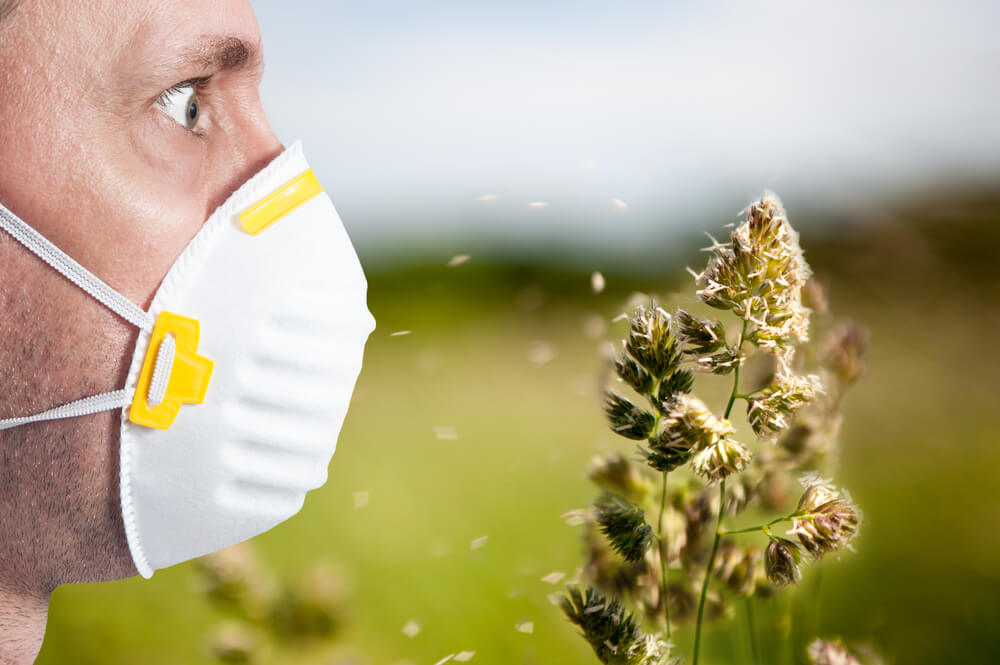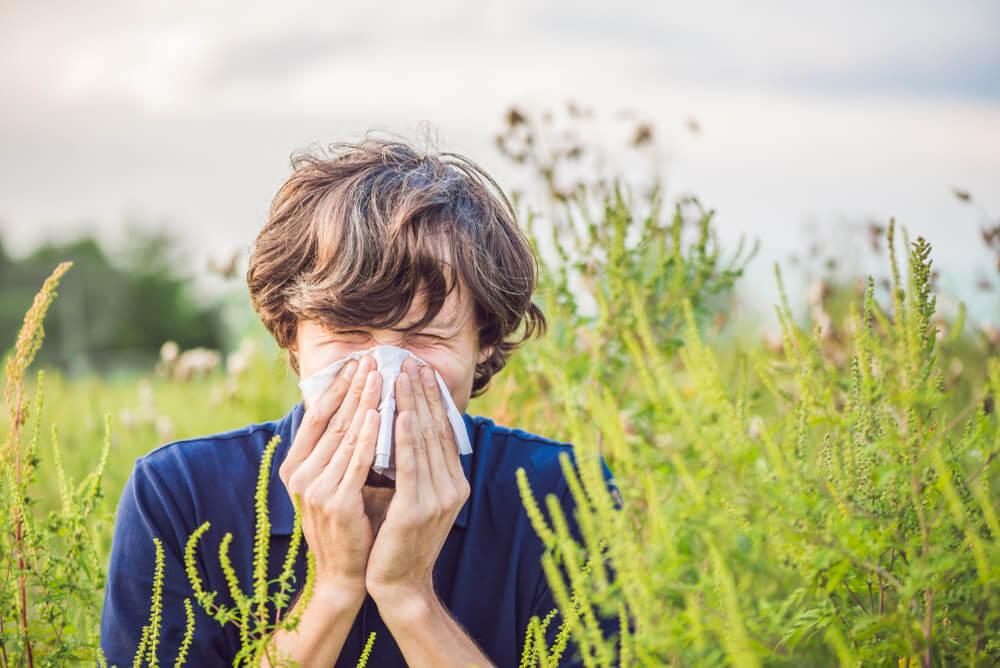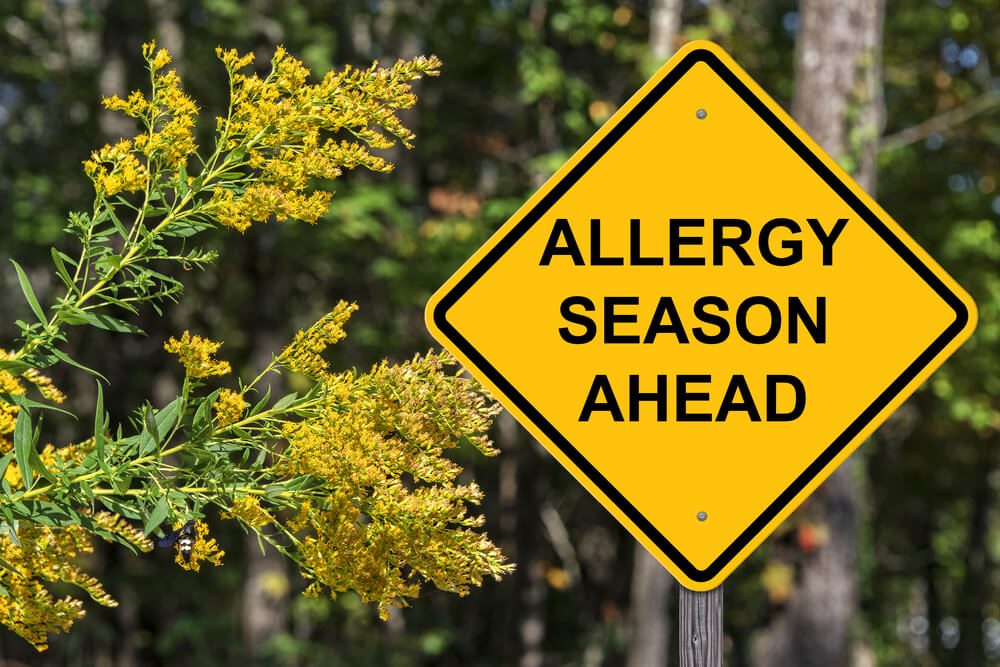As seasons change, many of us embrace the beauty of nature, but for others, these shifts, particularly in the fall, can bring about dreaded allergies. One of the prime culprits? Ragweed. With the rise in awareness about various allergies and the increasing number of people seeking allergy testing, it becomes essential to understand the nuisances of ragweed allergy.
Understanding Ragweed Allergy

Ragweed allergy is an allergic reaction to the pollen of the ragweed plant. This plant is common in North America and tends to flourish in the late summer to fall. Its lightweight pollen can travel for miles, making it hard for those sensitive to it to avoid exposure, especially during the ragweed season.
Common Ragweed Allergy Symptoms
For someone unfamiliar with the condition, pinpointing ragweed allergy symptoms might be a challenge. These symptoms often overlap with other seasonal allergies. Common signs of ragweed allergy include:
- Sneezing
- Runny or stuffy nose
- Itchy or watery eyes
- Coughing
- Wheezing
- Itchy throat
When Is the Ragweed Season?
Ragweed season typically starts in late summer and extends into the fall, generally from August to November. The peak of this season, however, varies depending on the region. For instance, the Northern states may experience peak ragweed pollen counts in early to mid-September, while Southern areas might see this peak a bit earlier.
Ragweed Pollen: A Mighty Foe
The primary reason why ragweed allergies are so prevalent is because of ragweed pollen. A single ragweed plant can produce up to a billion grains of pollen in one season. This pollen is lightweight, allowing it to travel hundreds of miles, carried by the wind. This makes it challenging, even for those living far from ragweed-rich areas, to avoid its impact.
Mitigating the Impact of Ragweed Allergy
For those who suffer from this allergy, the ragweed season can be a challenging time. However, with some precautions, the symptoms can be managed:
- Stay Informed: Track pollen forecasts on local news or online sites. These forecasts can help plan outdoor activities on days when pollen count is low.
- Limit Outdoor Activities: On high pollen count days, it’s advisable to stay indoors, especially during dawn and dusk, when ragweed pollen counts are highest.
- Cleanse Regularly: After outdoor exposure, it helps to shower and change clothes to remove any pollen.
- Air Filters: Use high-efficiency particulate air (HEPA) filters at home. They can help trap pollen and prevent it from circulating indoors.
Diagnosis and Treatment
Recognizing the signs of ragweed allergy is the first step toward seeking appropriate treatment. If you suspect you have this allergy, it’s crucial to see a healthcare professional. They can recommend allergy testing to confirm ragweed as the allergen causing your symptoms.
Once diagnosed, the following treatments might be prescribed:
- Antihistamines: These can help in reducing sneezing, runny nose, and itchiness.
- Nasal corticosteroids: These are sprays that help reduce inflammation and treat major symptoms.
- Decongestants: For those with a stuffy nose, decongestants can offer relief.
- Allergy shots (Immunotherapy): This involves getting regular injections of a small amount of the allergens that trigger your symptoms. Over time, this can decrease sensitivity to allergens.
The Ragweed Plant Family
Beyond the commonly known ragweed, it’s essential to note that the ragweed plant belongs to the Ambrosia genus, which comprises over 40 species worldwide. Of these, the most notorious for causing allergies in North America is the common ragweed (Ambrosia artemisiifolia). However, other species, like giant ragweed (Ambrosia trifida), can also be a source of allergenic pollen. Understanding the specific type of ragweed in your region can be beneficial in anticipating and managing symptoms.
Ragweed Allergy and Food Sensitivities
A fascinating yet lesser-known fact about ragweed allergy is its association with certain food sensitivities, a phenomenon termed “Oral Allergy Syndrome” or “Pollen-Food Allergy Syndrome.” Individuals with a ragweed allergy might experience mild allergic reactions when consuming foods that have proteins similar to ragweed pollen. Some of these foods include bananas, zucchinis, melons, sunflower seeds, and chamomile tea. Symptoms might range from an itchy mouth to slight swelling of the lips. However, cooking often alters the proteins in these foods, making them less likely to cause a reaction.
The Climate Change Connection
With the ongoing discussions around climate change, it’s worth noting its potential impact on allergies. Studies have indicated that rising global temperatures and increased carbon dioxide levels can lead to longer and more intense ragweed seasons. More extended periods of warmth provide ragweed plants with a prolonged window to release pollen. Furthermore, higher carbon dioxide levels can stimulate ragweed plants to produce more pollen. As global climates continue to shift, understanding and adapting to these changes becomes crucial for allergy sufferers.
Natural Remedies and Lifestyle Adaptations
While medical interventions are vital for many, some individuals seek natural remedies to complement their treatment or alleviate mild symptoms. Quercetin, a natural bioflavonoid found in apples, berries, and onions, has shown potential anti-inflammatory and antihistamine properties. Furthermore, butterbur, another plant-derived substance, has been studied for its potential benefits in managing hay fever symptoms, including those from ragweed allergies. Breathing exercises and certain relaxation techniques can also help in managing symptoms, especially for those whose symptoms exacerbate due to stress. Always consult with a healthcare professional before starting any natural remedies to ensure they don’t interfere with existing treatments or conditions.
Preventing Ragweed Growth in Personal Spaces
For those who want to take proactive measures, reducing the growth of ragweed near living spaces can be beneficial. Regularly mowing lawns and removing small ragweed plants before they mature and release pollen can make a significant difference. Planting competitive species that overshadow ragweed, like densely growing grass, can prevent its growth by occupying space and resources. Utilizing natural herbicides or specific organic solutions can also curb the spread of ragweed in your garden or yard without resorting to harmful chemicals.
The Psychological Impact of Seasonal Allergies

While the physical symptoms of ragweed allergy – or any seasonal allergy, for that matter – are evident, the psychological impact is often overlooked. Continuous symptoms like itchy eyes, sneezing, and fatigue can disrupt daily activities, affect sleep patterns, and overall reduce the quality of life. This continuous disruption can lead to feelings of frustration, irritability, and even mild depression. Social activities might be limited during the peak ragweed season, leading to feelings of isolation. Recognizing this psychological impact is crucial, and seeking support, be it through counseling or supportive communities, can be as essential as addressing the physical symptoms.
In Conclusion
Ragweed allergy, with its widespread prevalence, has become a major concern for many individuals. Recognizing its symptoms, understanding the peak ragweed season, and knowing how to manage and treat it can make a world of difference. If you or a loved one experiences any symptoms, remember that timely intervention can alleviate the discomfort. For specialized care, consider seeking advice from the Allergy and Immunology Center, which offers a comprehensive approach to diagnosing and treating various allergies.


